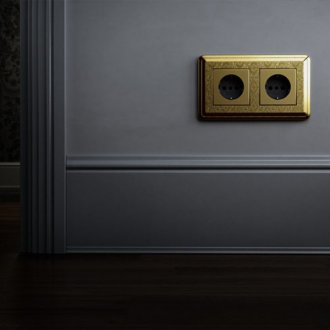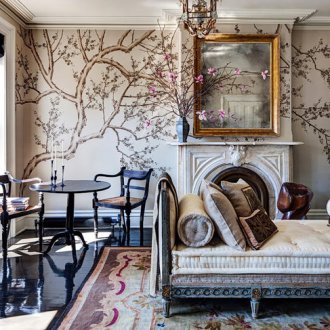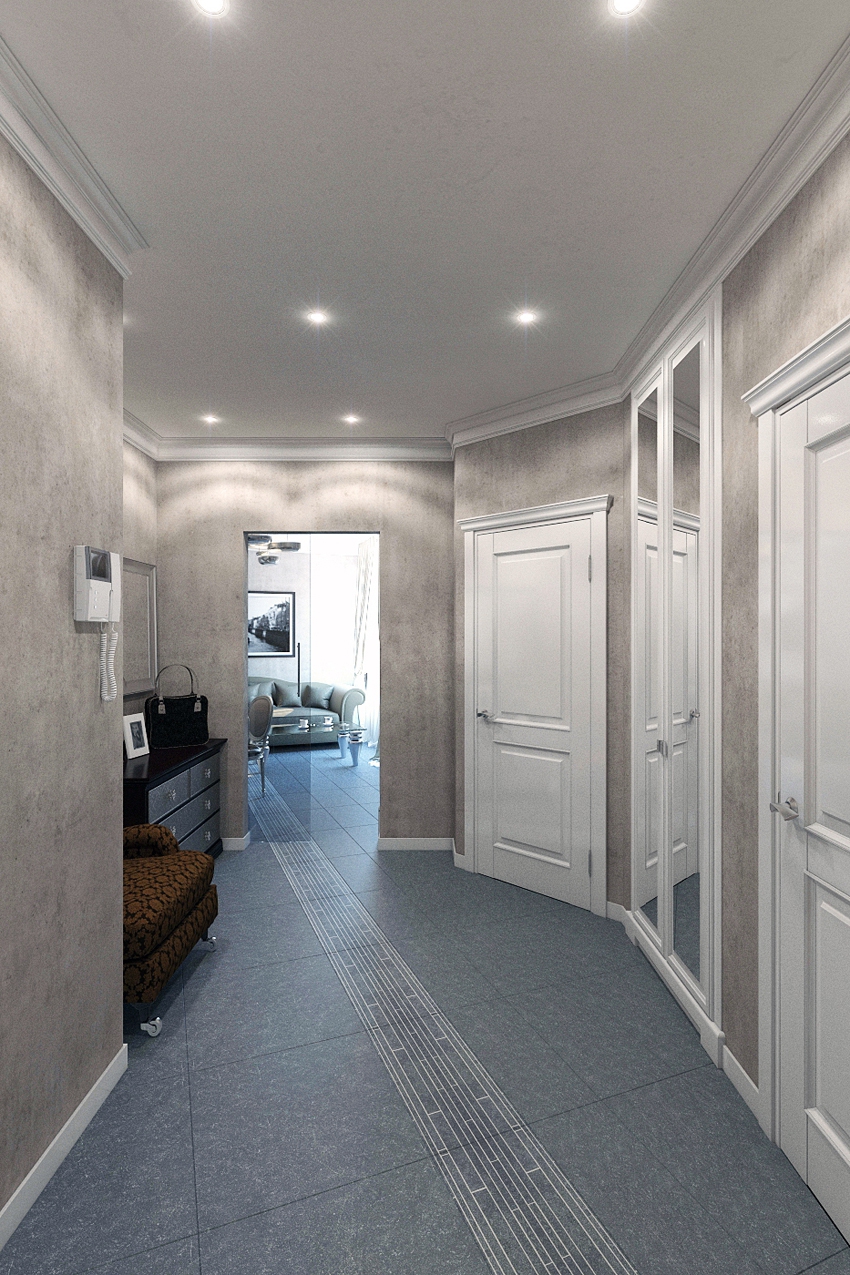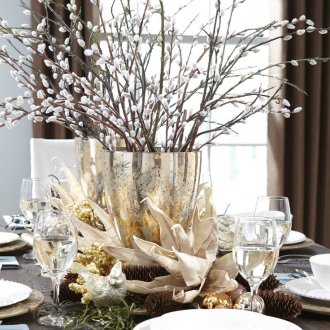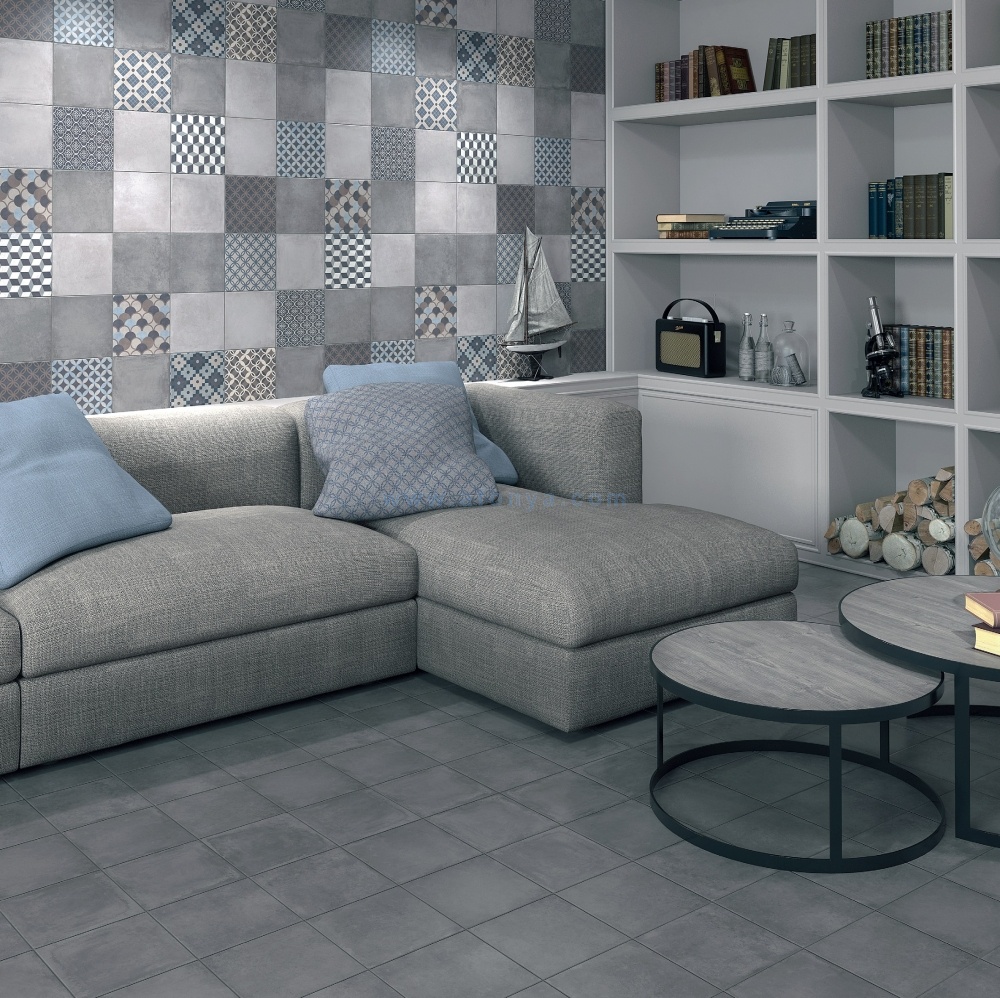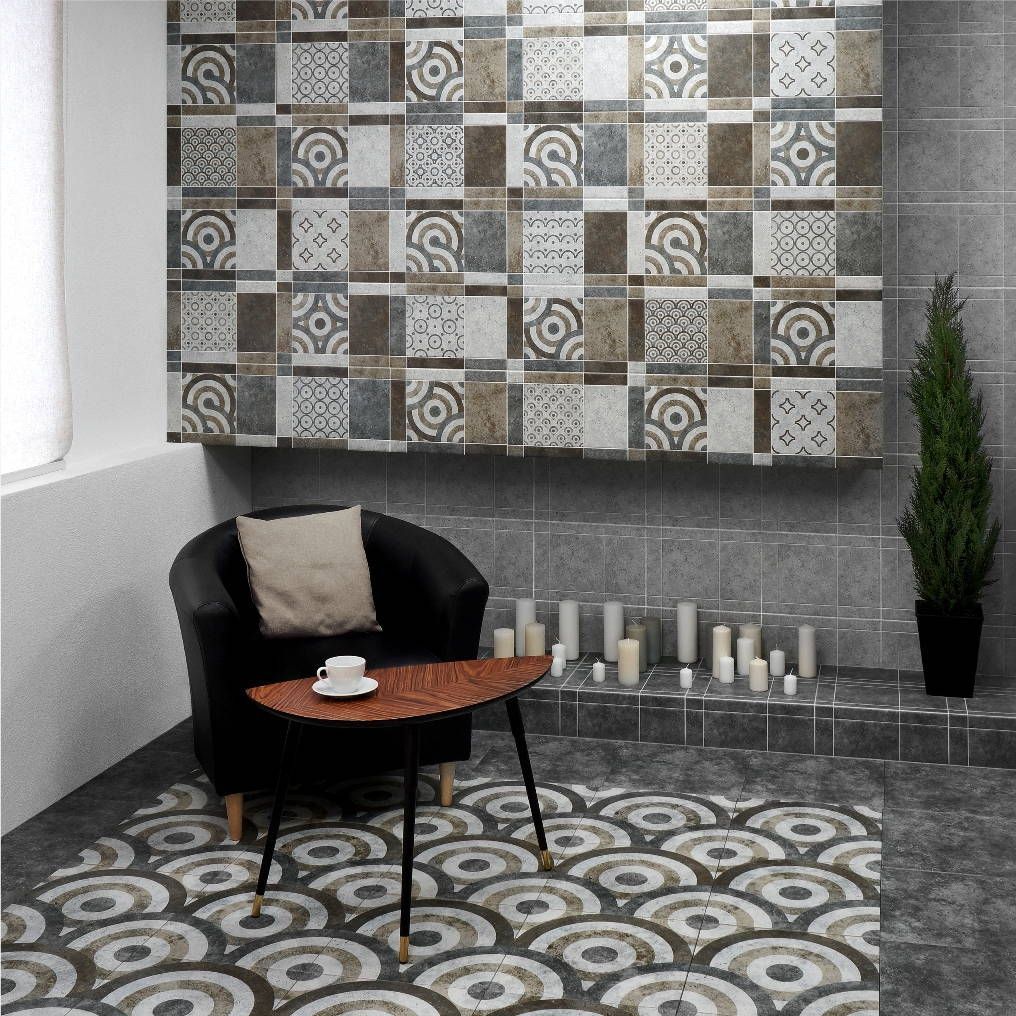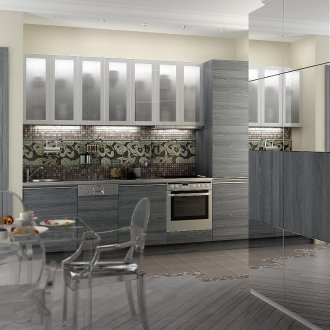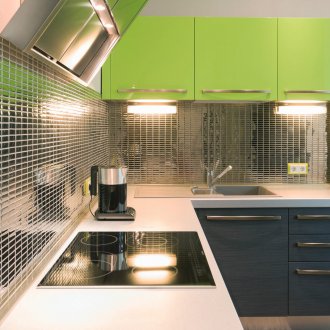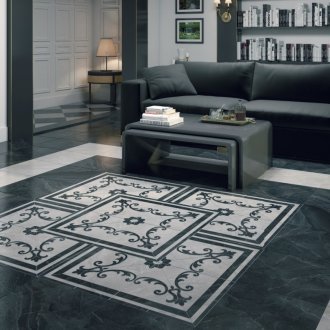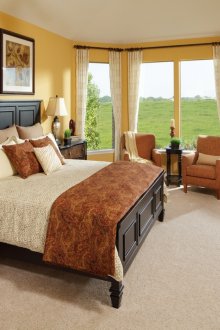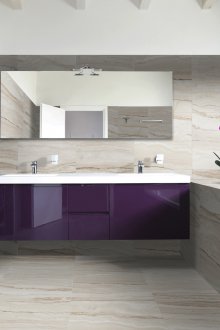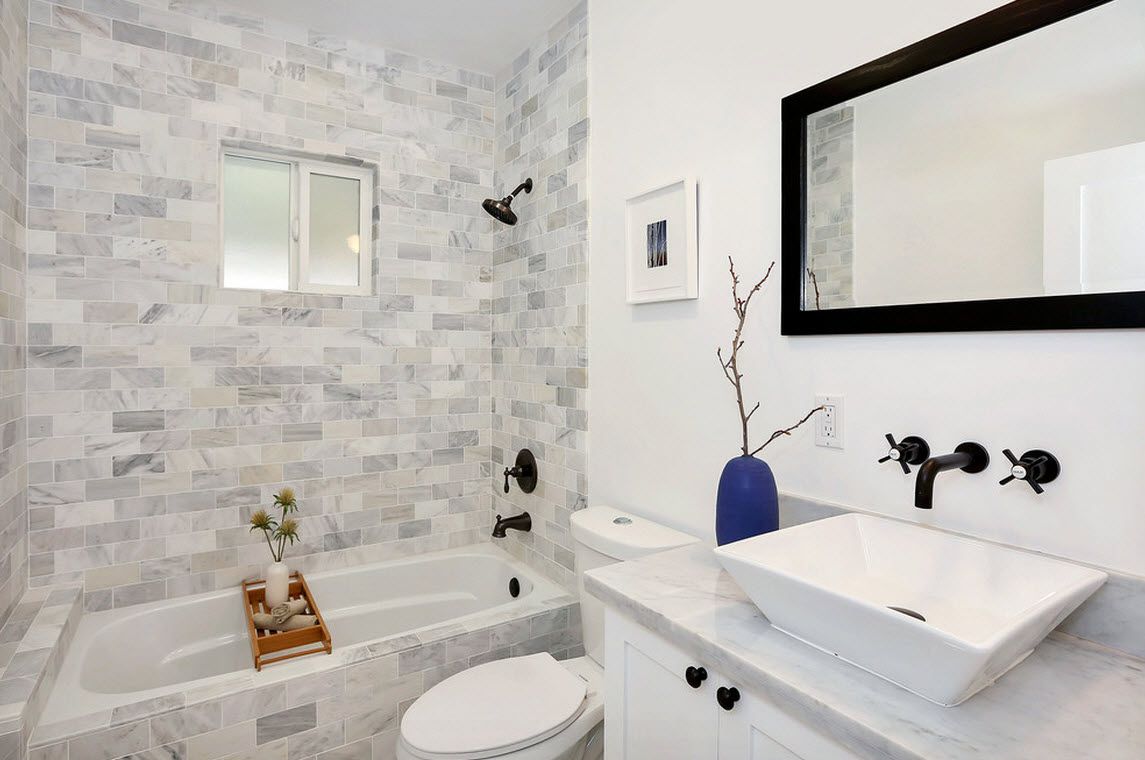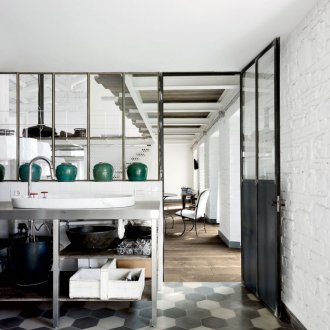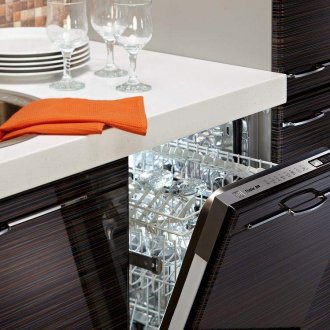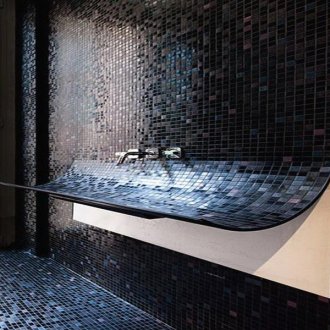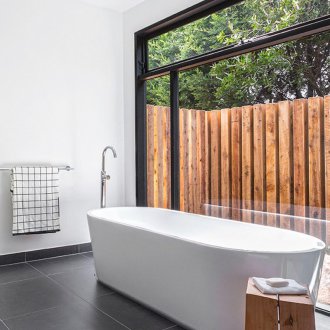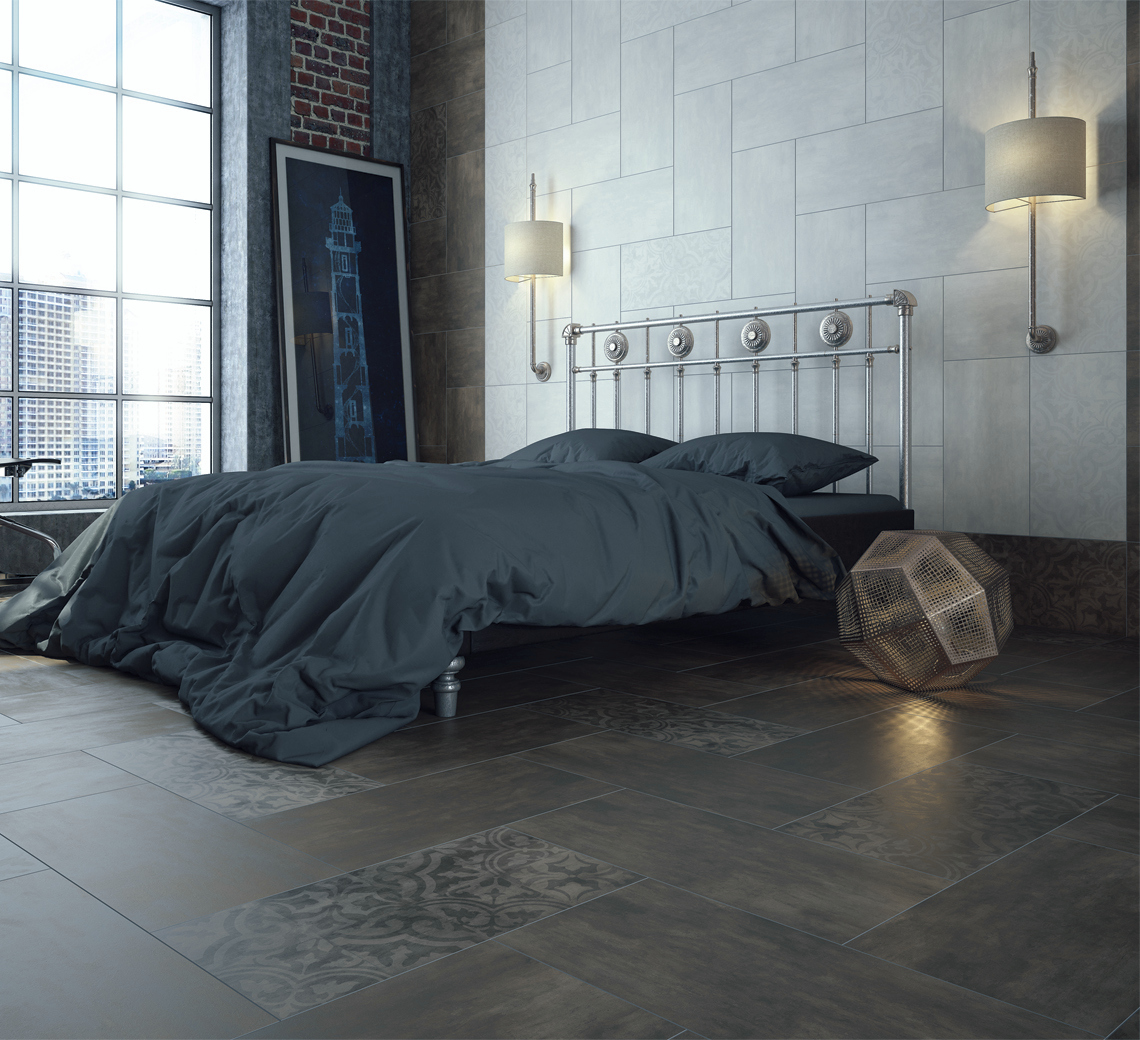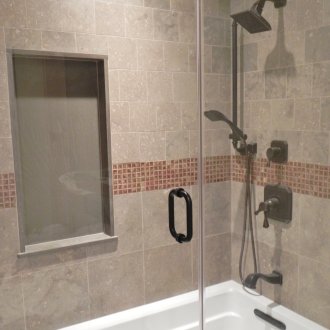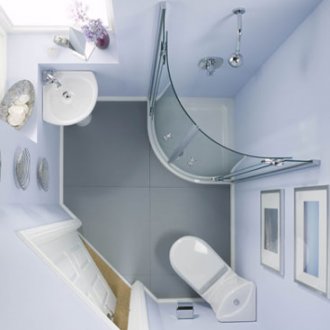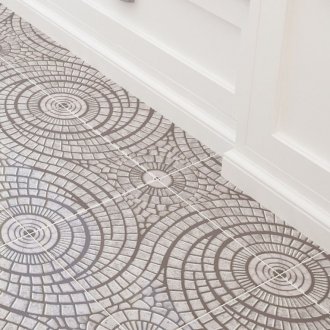Gray tile in the interior of the premises: the harmony of a new color (27 photos)
Gray color, despite the fact that many consider it to be completely faceless and colorless, like any other, is composed of the addition of perfectly defined colors in the solar spectrum. Gray ceramic tiles get their color when the red, green and blue components of the solar spectrum are present in the pigments.
The seeming dullness of the basic gray color disappears under the hands of competent colorists and designers. It is impossible to name the exact number of shades of gray, although the RGB color palette contains 256 available halftones. Neumers have also worked hard to promote tint diversity. What are the names of colors: river nacre, feldgrau, marengo or gray dove. And this is not a complete list of possible variations on the theme of gray.
Harmony of gray tones
Gray tiles in the interior of residential and auxiliary premises are often seen exclusively in combination with contrasting white tones. The motivation in such cases is simple: gloomy gray shades diluted with bright white do not create a feeling of darkness. Paying tribute to any taste and any preferences, it is worth noting that this approach to color combinations is somewhat primitive.
The gray tile has many not only color, but also other related aspects that have a visual psychological effect. An important determinant component that distinguishes floor and wall tiles is its texture, the size of the layout elements, and the shape.
The simple combination that gray tiles on the floor that imitate concrete and loft tiles of various shades of gray can not make a sense of darkness. Such a composition, harmoniously complemented in the interior of the bathroom and in the kitchen by furniture and accessories in light shades, is common among young people.
The brightness of the interiors, decorated in color with shades of gray, adds the inclusion of glass decorations and furniture elements, light design with a yellow glow of lighting fixtures. A good visual effect is given to the bathroom, decorated with an unusual shape and large-sized mirrors, especially equipped with inserts corresponding to gray tones.
Widespread mirrors with built-in lighting will make the design especially cozy.
Gray, contrary to widespread misconception, harmoniously combines with many colors-companions. The whole beige and peach palette perfectly coexists with it, adding velvety and a sense of warmth.
The interior imitated by black and brown tones, imitating a gray stone, acquires rigor and completeness. Green, all shades of blue, lavender colors - harmonious tandem pairs of gray finishes.
In a thoughtful interior of the kitchen, light gray tiles look very good. The gray floor component with imitation of the natural pattern of the old tree gives it a special charm. Porcelain tile on the floor can have another shade combined with gray: brown, black, white.
Value of shapes, textures and tile sizes
The design and decoration load, along with the color, is borne by other characteristics of finishing materials and decorative elements:
- the size that ceramic tiles, porcelain tiles, borders and other decorative elements have;
- the shape of the tile elements;
- the surface texture that the tiled finishing material has.
It is difficult to overestimate the value of the geometric dimensions of the tile when arranging the surfaces of walls and floors.
The tiled floor, laid out with tiles with a size of 10x10 cm, creates a completely different spatial and visual perception than the same coating, in the arrangement of which porcelain tiles with a side of a square of 300 mm are used.
Mosaic flooring, respectively, looks very different than a coating that mimics a wooden floor.
Approximately the same situation arises if we combine wall tiles imitating natural bricks with elements that emphasize the gloss of polished metal with their pattern. The widespread artistic mosaic, which is performed using ceramic tile elements, has become available for use with the advent of the technology for the production of tiles of small shapes.
Gray tiles on the floor can have a very different surface texture. Traditional speckled porcelain tiles are almost completely replaced by tiles imitating a variety of materials of natural origin, creating art panels in the style of graffiti. Ceramic tiles imitating silicate brick have gained popularity among fans of the loft style.
Under the brick, creative personalities decorate both the entire kitchen and the elements zoning its space. Tiles for granite, marble, and other natural rocks, measuring like a brick, are used in the design of kitchen screens, arches, passages and local areas with imitation of crumbling plaster. Regardless of the texture of the tile, the decoration of surfaces with gray brick tiles has its admirers. Beige or other contrasting grout will only emphasize the industrial style.
What to look for
The use of gray in the design of a living room with all the variety of shades, sizes and textures of ceramic tiles requires a thoughtful and attentive approach. Not always hardware visualization of the project gives a complete picture of how the interior of the bathroom, kitchen or hallway decorated in gray tones will actually look. There are several reasons for this:
- a significant impact on the visual perception of gray have indicators of natural and artificial illumination of surfaces. For example, a matte tile integrated into a glossy interior softens the visual contrast of surfaces in excessively bright lighting;
- interior design in gray tones requires careful selection of accessories and furniture of a certain color scheme, which is not always possible to show on the monitor. It may happen that the gray tile in the bathroom, for example, imitating a brick, in the hardware image is well combined with snow-white furniture, but the real tandem is not so harmonious.
The gray color in the interiors, despite the existing obstacles, is in demand and popular. Consultations of a knowledgeable designer, own vision and color preferences will help to choose the optimal color combinations of all elements of room decoration.
